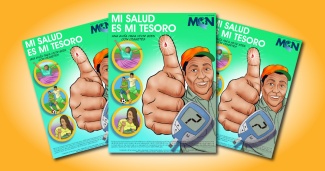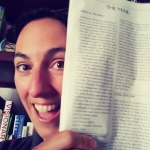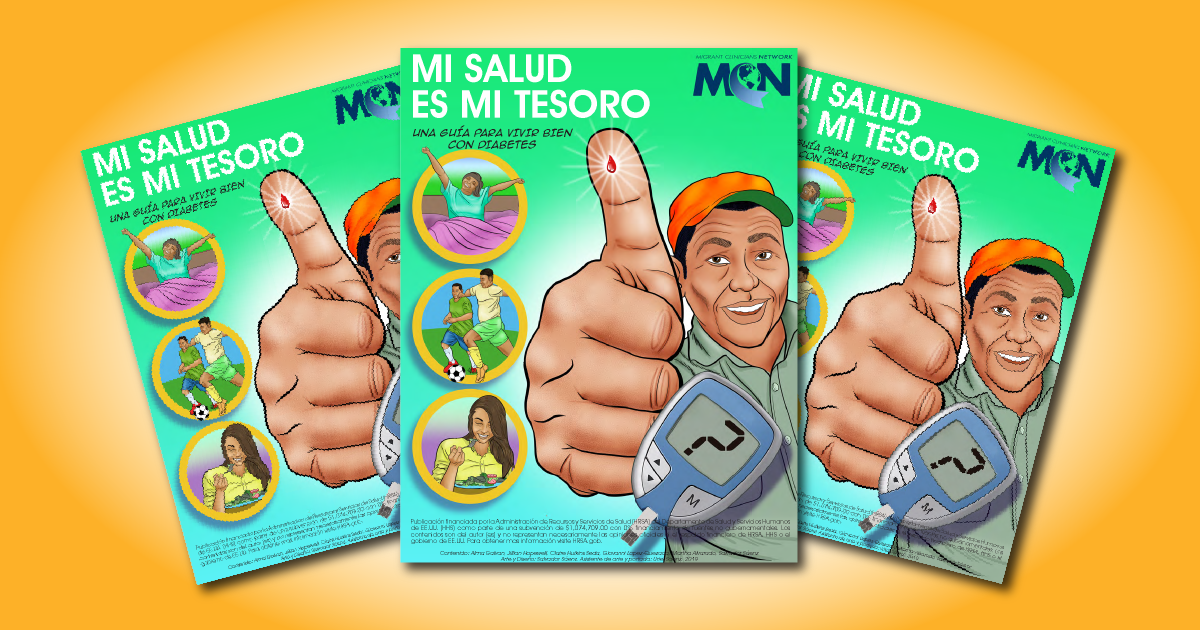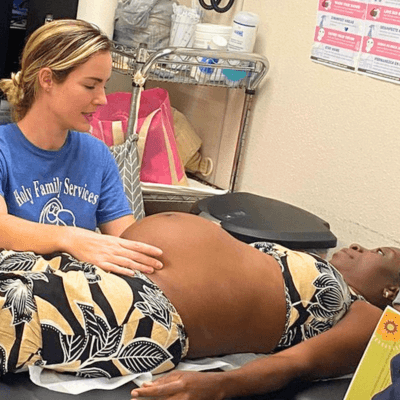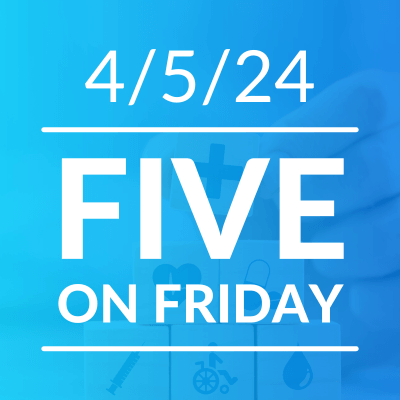New Spanish-Language Comic Book on Living with Diabetes
[Editor’s Note: The spring issue of Streamline has arrived in mailboxes around the country. On the front page, we announced the release of Migrant Clinicians Network’s newest comic book, and included a two-page sample of the comic book inside. Below is a reprint of the Streamline article. Subscribe to Streamline to receive the in-print quarterly journal.
The comic book is currently available as a digital file for download and printing here. Be sure to subscribe to MCN’s blog and follow us on social media (Facebook, Twitter, and LinkedIn) to be alerted for future availability of in-print comic books as funding allows. Access comic book resources, including all of MCN’s popular comic books, here.]
Migrant Clinicians Network’s groundbreaking new Spanish-language comic book, “Mi salud es mi tesoro: Un guía para vivir bien con diabetes,” or “My Health Is My Treasure: A Guide to Living Well With Diabetes,” tells the relatable story of Goyo, an agricultural worker with a new diabetes diagnosis. Illustrated by artist and frequent MCN collaborator Salvador Saenz, the colorful, low-literacy comic book allows clinicians to share how to live with diabetes, with content tailored specifically for agricultural workers. Goyo’s conversations with a coworker friend help him navigate the potential pitfalls of living with diabetes and lead the comic book reader through several stand-alone pages on diet, exercise, foot care, and illness prevention. The comic book is particularly notable for its recognition of mental health.
A new diabetes diagnosis can produce emotional strain, like confusion over what to eat, frustration or disappointment over food choices at community and family gatherings, fear of complications, and anxiety over maintaining health while migrating. These new stressors may add to a mobile agricultural worker’s existing mental anguish due to the nature of farmwork employment -- temporary, physically demanding, sometimes exploitative -- and the stress of migration, with the dozens of barriers to health and well-being that it erects.
On caring for emotions, the comic illustrates being away from family, not being able to communicate with ease, and missing the comforts of home. “But there are things we can do to feel better,” the comic continues, with concrete recommendations to build community, maintain communication with family, and seek health services. This direct recognition of the emotional toll of living with diabetes as an agricultural worker is largely absent in most patient-facing diabetes materials.
The comic’s recommended diets include an example menu that follows the American Diabetes Association’s low-carb, low-fat diet, and a second example menu of a strict whole-foods, plant-based diet, both of which have been well documented to lower hemoglobin A1c. The foods recommended are familiar to readers from Mexico, Central America, and the Caribbean, like a salad of jicama, carrots, and celery with chile and lime, or black beans with cumin. A fill-your-plate page emphasizes the inclusion of a wide range of vegetables. The exercise recommendations keep in mind an agricultural worker’s low income and limited time outside of work, recommending lifting sand- or water-filled water jugs, gardening, and walking as low-cost exercises that are widely accessible. The final page of the comic allows the reader to fill in recorded A1c levels at appointments and to track goals relating to medicine, exercise, food, and weight control.
View the complete comic book here.
Like what you see? Amplify our collective voice with a contribution.
Got some good news to share? Contact us on our social media pages above.
Return to the main blog page or sign up for blog updates here.
- Log in to post comments
